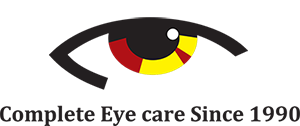Keratoconus
What is Keratoconus?
More than 1 in 1000 patients have the bilateral corneal disease keratoconus. Typically, the illness begins in youth or early adulthood.
Its aetiology is unknown, and it is unexpected how it will develop after a diagnosis. When both eyes are affected, the patient’s ability to drive or see regular print may be impacted. Surgery can be required if the condition progresses further.
Keratoconus can be successfully handled using a number of therapeutic and surgical treatments, frequently with little to no impact on the patient’s quality of life.
Risk Factors
Typically, it is an inherited corneal condition that is autosomal dominant in nature. This implies that roughly 50% of family members could contract it. However, it can also happen at random, affecting only one family member. 90% of people with it have bilateral involvement, and it affects both men and women equally.
Other Risk Factors:
- Eye rubbing
- Family history of keratoconus
- Genetic predisposition
- Certain disorders such as Down’s syndrome
- Repeated ocular allergy
- Connective tissue disease
- Long-term rigid contact lens wear.
Symptoms
- Early stages just having the need for spectacle correction.
- As the disease progresses, the vision deteriorates.
- Visual acuity becomes impaired at all distances, and night vision is sometimes quite poor.
- Some individuals have vision in one eye that is markedly worse than that in the other eye.
- Some develop photophobia (sensitivity to bright light), eye strain from squinting in order to read, or itching in the eye.
- There is usually little or no sensation of pain.
- Keratoconus can cause substantial distortion of vision, with multiple images, streaking and sensitivity to light.
Progression of the Disease
Keratoconus is a condition that is virtually invariably progressive. About 10% to 20% of patients have very advanced keratoconus. The cornea might become highly steep, thin, and uneven.
Treatment
Keratoconus is a known progressive disorder. All modalities of treatment whether it is glasses, contact lenses, INTACS or Phakic IOL’s, all correct the refractive error secondary to the cone formation; they DO NOT treat the keratoconus. The mainstay of treatment still remains Collagen Cross Linking also known as C3R/CXL.
